German Grammar
Learn German grammar step by step with clear explanations and real examples. This category covers essential topics from A1 to B2 level including articles, verb conjugation, sentence structure, tenses, word order, and more.
-
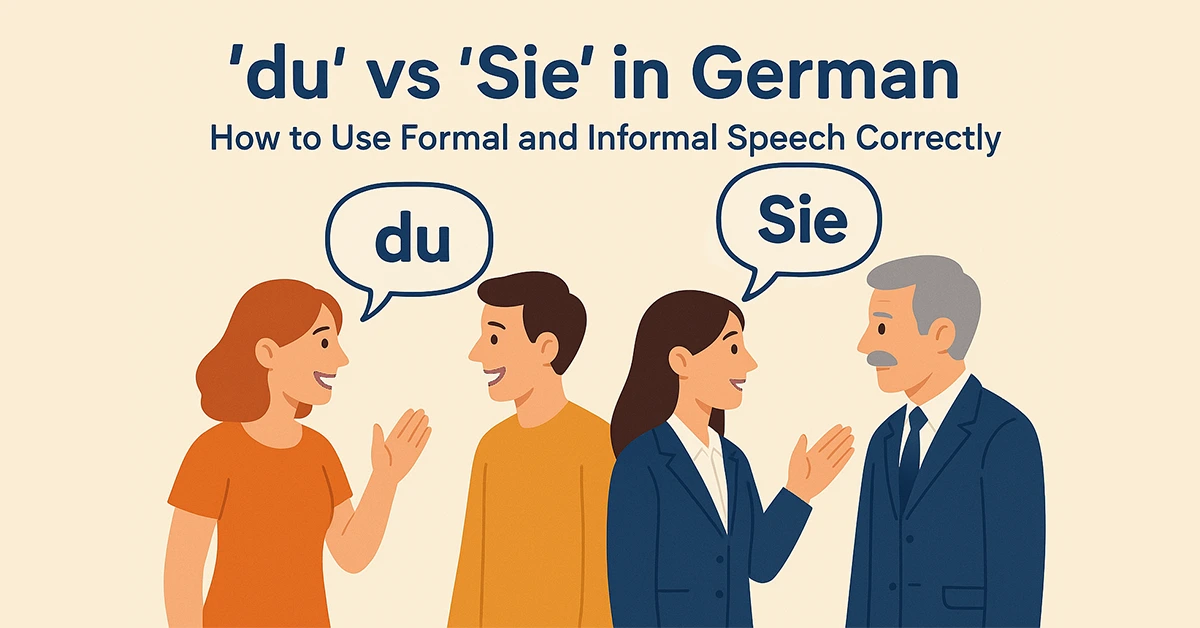
“du” vs “Sie” in German – Formal vs Informal Speech Explained
Learn when to use “du” and “Sie” in German with real-life examples, grammar tips, and cultural insights. Master formal and informal speech with confidence!
-

German Word Order: Main vs Subordinate Clauses Explained Simply
Learn how German word order works in main and subordinate clauses. This guide explains clear rules, real examples, and key tips to master sentence structure.
-
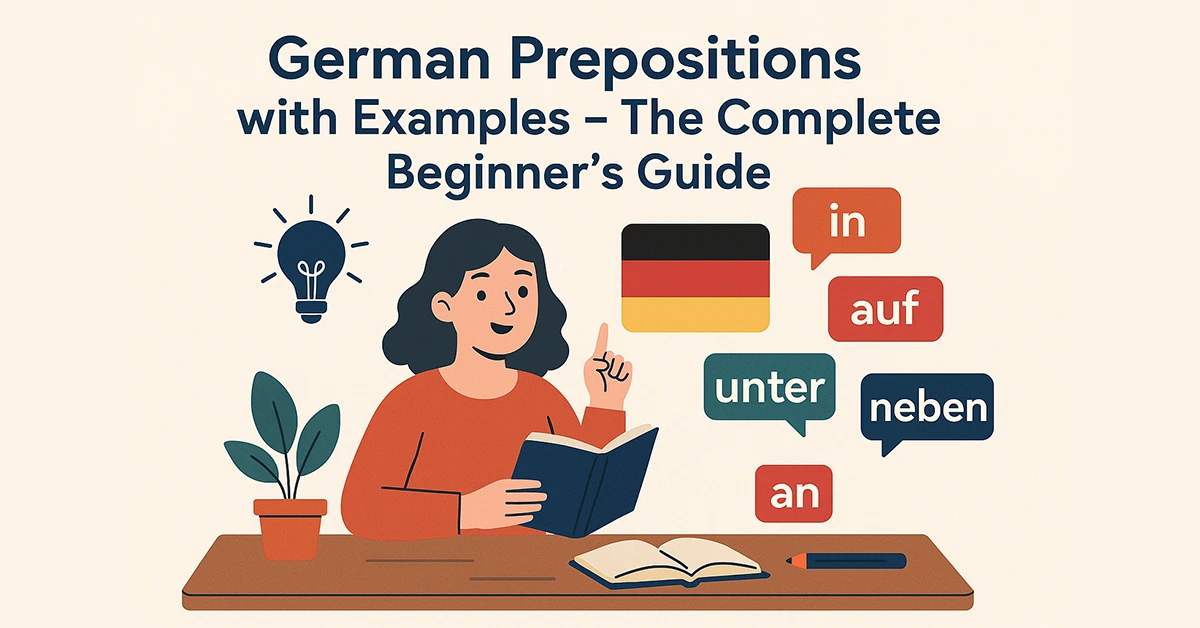
German Prepositions with Examples – Complete Beginner’s Guide
Learn how to use German prepositions with real-life examples, tables, and tips. Covers accusative, dative, genitive, and two-way prepositions for beginners!
-

German Verb Conjugation: sein and haben for Beginners
Learn how to conjugate the essential German verbs sein and haben in all tenses. This beginner-friendly guide covers present, past, and perfect forms with examples.
-
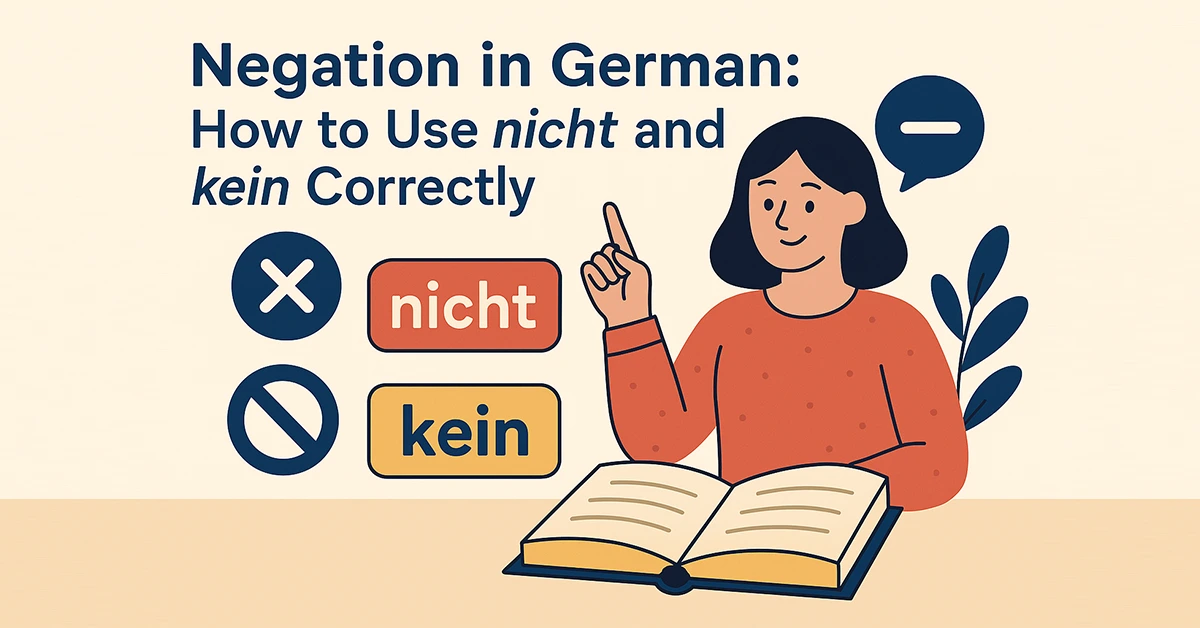
Negation in German: How to Use nicht and kein Correctly
Learn how to use nicht and kein in German with clear explanations, real-life examples, and practical tips. Master German negation step by step in this guide.
-
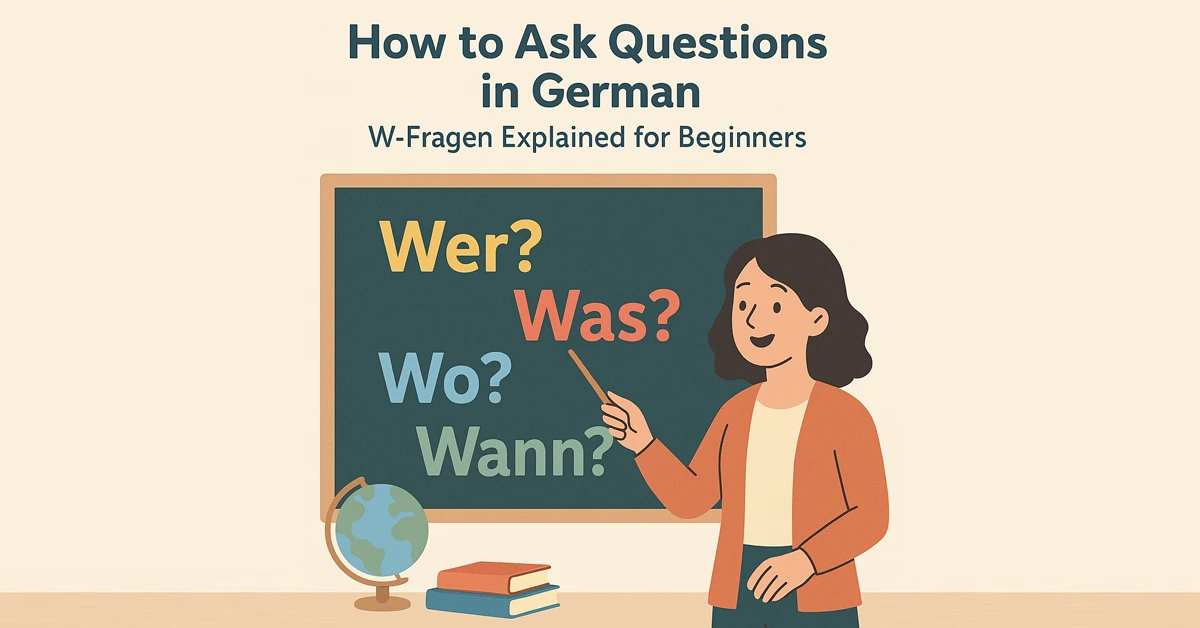
Ask Questions in German – W-Fragen Guide + Free PDF
Learn how to ask questions in German with W-Fragen like wer, was, wo, wann. Beginner-friendly grammar rules, real examples, and practice tips included.
-
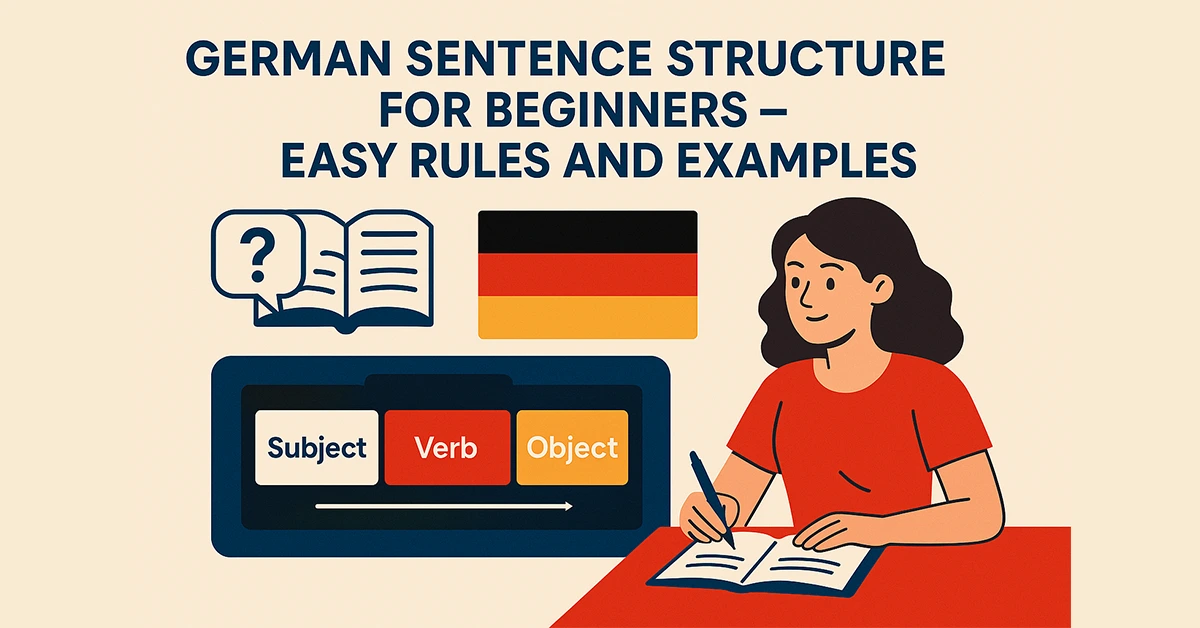
German Sentence Structure for Beginners – Easy Rules & Examples
Learn German sentence structure step by step with clear examples and grammar rules. Master word order, verb placement, and build accurate sentences easily.
-

The Present Tense in German – A Beginner’s Guide
Learn how to use the German present tense (Präsens) with clear rules, examples, and conjugation tables. Perfect for beginners to start speaking German today!
-

Master German Nouns: der, die, das + Free PDF
Learn to use German nouns and articles der, die, das correctly. This beginner guide explains gender rules, examples, and helps you master German grammar.